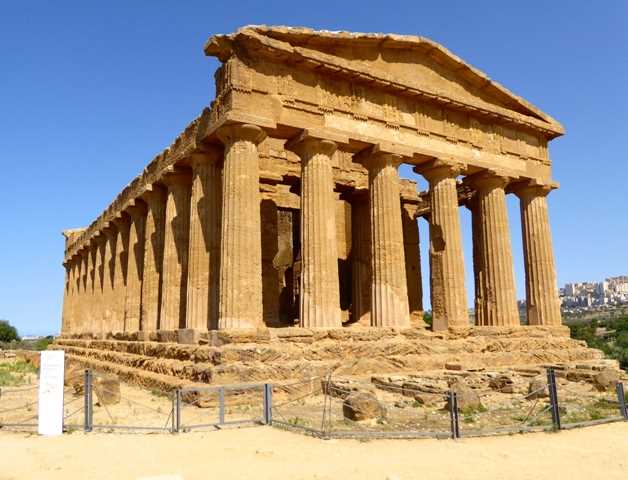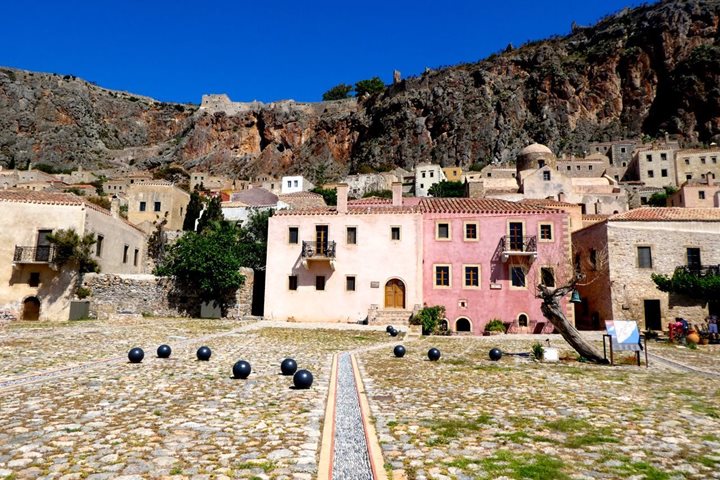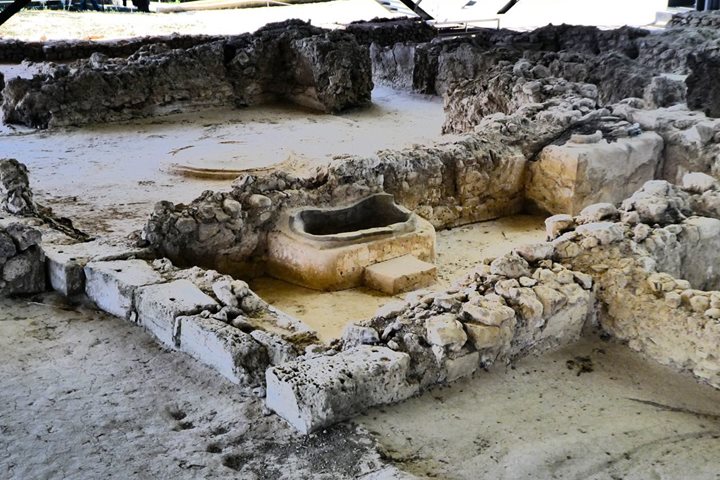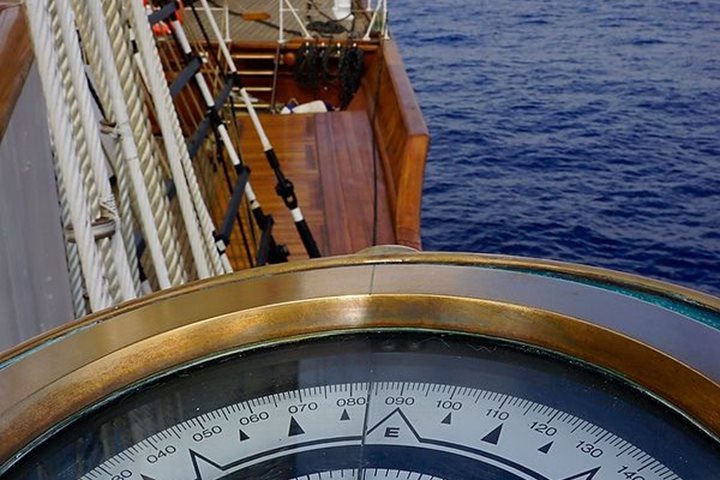Agrigento’s Valley of the Temples was made to impress from the sea, and we could make out the sloping ridge with the ruins of the Temple of Hera, Concordia, and Heracles from our anchorage as the sun came up. At 0700 Captain Pushkarev began to weigh anchor to move into the interior harbor to dock, but we were distracted by a small fishing boat with a wildly gesticulating Sicilian fisherman circling Sea Cloud. Our local pilot started to translate, but when the anchor came up trailing a big fishing net no more explanation was needed. It took a little while to cut the net free, but we were finally on our way and soon docked for our first call in Sicily at Porto Empedocle.
The Classical Greek city of Agrigento means “people (gento) of the land (agro),” and the colonizing Greeks that came to Sicily quickly prospered on the fertile soils. They became quite wealthy and powerful in the Classical Age of the 8th to 4th centuries B.C., and through the years built a series of temples along the sloping ridge to honor the Olympian Gods and Heroes. We arrive exactly at the opening hour of the upper Temple of Hera, but were slowed down with a new security screening process that rivaled the airport security process. We then overcame a few technical communication glitches with our listening devices before we all finally let the majesty of the temples and the setting carry away our imaginations to another era.
The weather was absolutely perfect with a light breeze keeping it cool, and the Mediterranean Sea was always visible as we made our way down the Sacred Way. The mostly intact Concordia Temple was certainly the highlight, and one of the most impressive temples in the ancient Greek World. We then passed the Temple of Heracles (Hercules) and took a long walk around the remnants of the Temple of Zeus. The next surprise was that the exit gate after the Temple of Zeus was locked and nobody seemed to have the key, so we all got a bit of exercise doubling back to find the parking area. The Archeological Museum had a most impressive selection of pottery, which the local schoolchildren also had on their education curriculum this morning. We made it back to the ship for lunch as Sea Cloud cast off, and we were all ready to put to sea again for an afternoon sail.
It was blowing fresh from the west, and we cautioned that we probably would only set lower and upper topsails. However, Captain Pushkarev set the topgallants and the foremast royal, as well as the topmast staysails, and before we knew it we were on a mighty sail in a 25-knot wind heeling over at 10 degrees and sailing at 8 knots. It was a much more exciting afternoon than expected, especially as we gathered on the lido deck for historian Robyn Woodward’s talk on the history of Sicily. Everyone had their left foot planted on the deck as we leaned with the deck and screen, until finally Captain Pushkarev took in the upper sails and staysails and we slowed and righted the ship. It was a great sail, and we turned into the seas for the remainder of the evening.
National Geographic photographer Massimo Bassano gave a short talk on the artisanal blue fin tuna fishery of Sicily, and showed photos from his story from National Geographic magazine as we made our way toward the port of Mazarra del Vallo where the tuna fisheries are now economically extinct.









